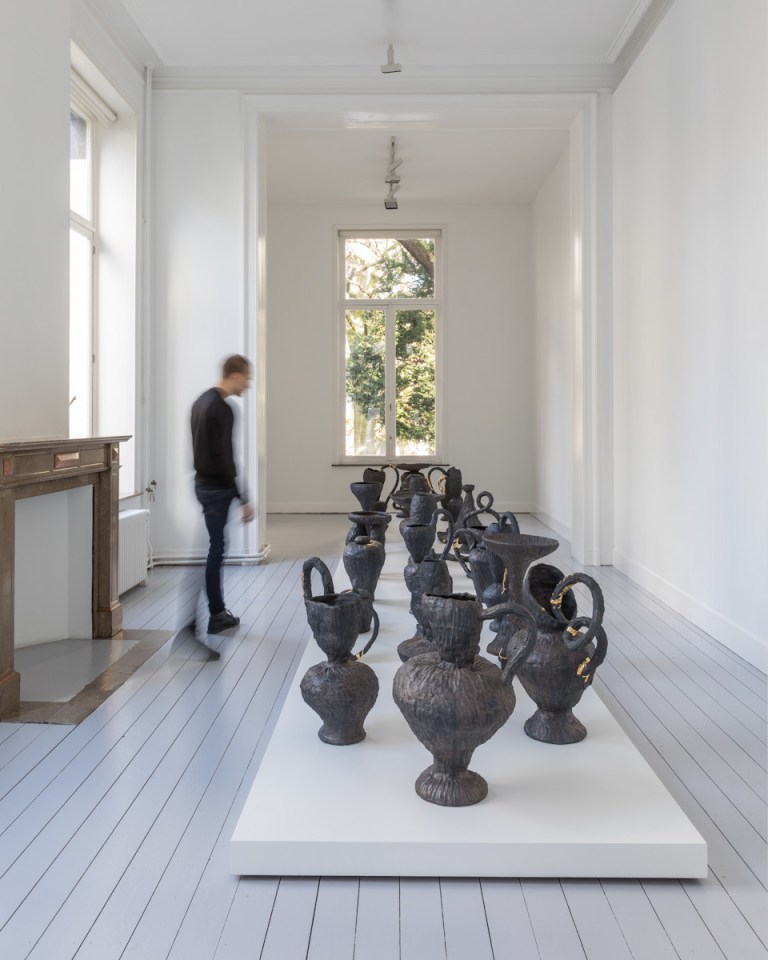
I mentioned in a recent post that I am now ready to look into a contemporary context for my work. This is not altogether easy as what I do is not centred on one idea or medium alone. I know that many artists today are cross disciplinary and work in various mediums; this makes contextual correspondences all the harder to find. I have to be careful not to mention every one and sundry that I like or identify with in some way. This sort of openness would only confuse and lead to a lack of direction. What would making a long list do, help in the project development, show my wide taste in things?
No, what I am looking for is work that directly contextualises mine in terms of contemporary ideas and environments. Andrew Lord, ten years my senior is one such practitioner. Although he would not like to be called a potter, his body of work very much centres on the idea of vessels and clay, something I also work with.
Lord’s central notion is an interesting one. It is an idea that many working in clay have followed for some time, that of ‘rescuing’ pottery from still life painting. As Mark del Vecchio lucidly points out in his book, Postmodern Ceramics:
From Pablo Picasso to Giorgio Morandi, Vincent Van Gogh, and George Braque, pottery has tended to be the visual anchor of most still-life compositions. Contemporary ceramists have begun to reverse the compliment and draw inspiration from the paintings in which these pots appear, returning them to the three-dimensional realm, but retaining some painterly associations.
Looking for what is common between two and three dimensions is a process which also requires an awareness of what is lost in translation. Only in this way can an essence of the object be made manifest.

Andrew Lord displays his work in such a way as to allude to the still life genre by placing objects on tables and plinths, carefully arranged in terms of light, time of day, space and so on. The arrangements often remind me of Morandi’s still lifes, treated as emerging from the material becoming objects felt in the making. He leaves overt traces of how the object is formed often to the point of caricatured.
This work is consonant with elements of some of my work, playful and ‘rough modelled’ caressed into being aimed at a sense of Platonic idealism imperfectly fashion in and on (E)arth.
It also interest for me to note that in some cases, vases are displayed just off the floor in a similar way to how I plan to show H’s Play Things in the final show… with one twist.

Much of this approach is consonant with what Heidegger says in his essay, The Origin of the Work of Art:
- The material (clay) is central and clearly evident in the work.
- The clay is subservient to what is being portrayed yet it ‘shines forth’ 1.
- There is a struggle between the nature of the material and what it tries to portray, what it is formed into or as Heidegger would say, between the Earth and the World.
- The vessels are not the product of craft yet he uses, techne or mode of knowing, to bring out hidden Aletheia, or being.
- The being of the thing is not just made, it is brought forth and made evident. It is generated from within through phusis as though through natural law.
But what is the role of craft in this act of phusis? Heidegger does become confusing, or more likely confused unable to articulate a distinction between craft and art: he descends into subjective ideas of the mystical and the sublime and sacred to support his thesis. Perhaps a simple, if still elusive reply is that the impetus for a work of art comes from within an internal process of natural growth, whereas craft’s impetus is external to its growth. It is clear to me that this categorisation is false in many cases and can only be considered from piece to piece and not generically.
Having said all this, Heidegger does provide a useful way of thinking about art as a spontaneous act of emergence in the making also raising interesting questions regarding the relationship between what is ‘being creative’ and artistic practice.
- Heidegger[↩]








